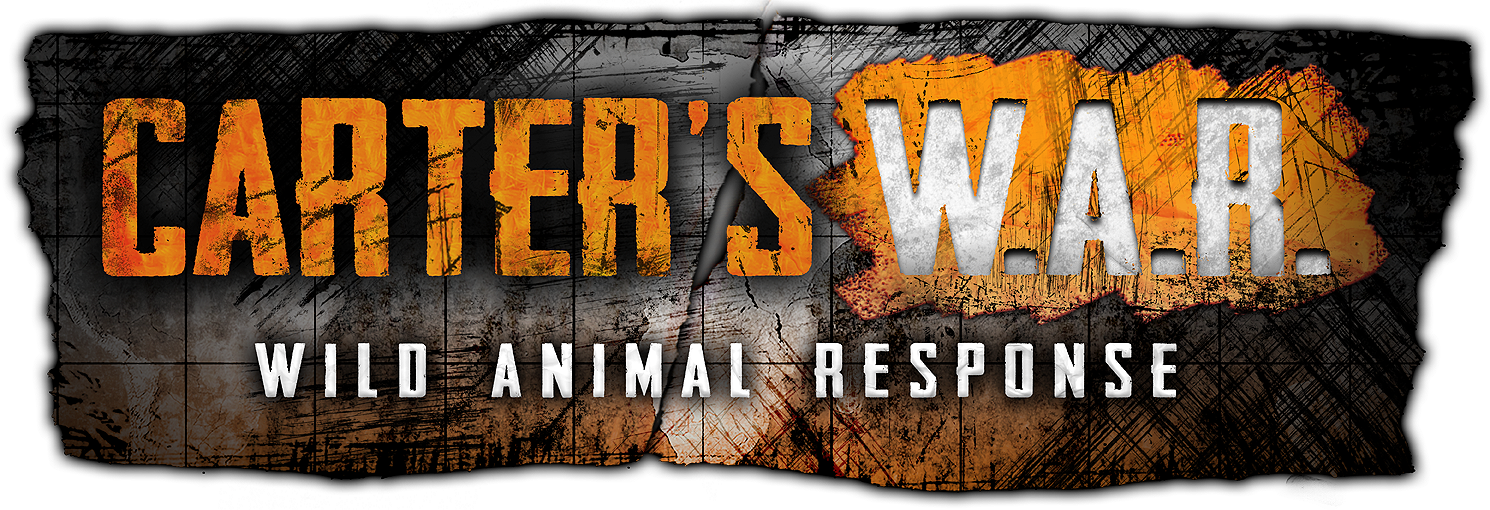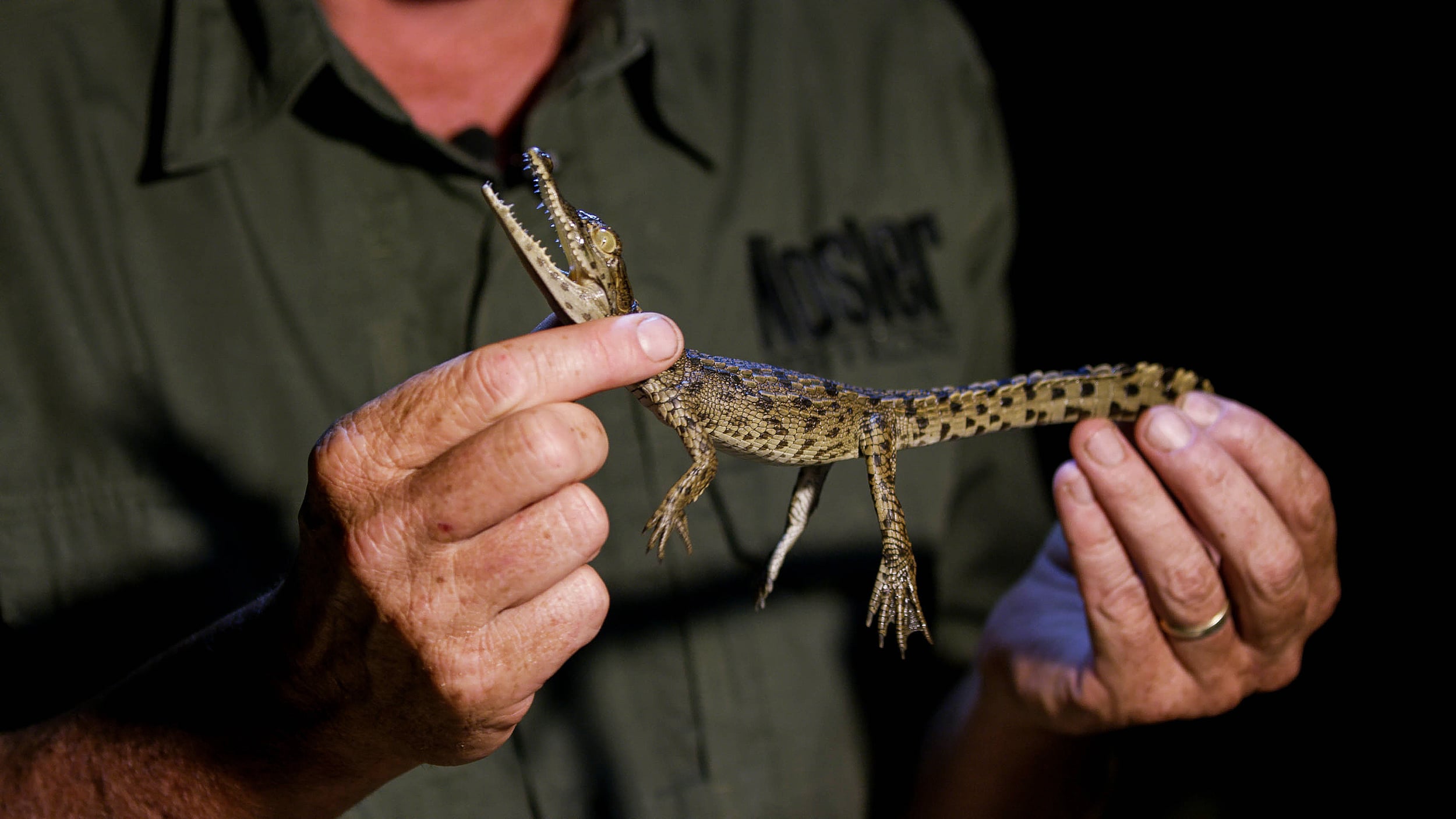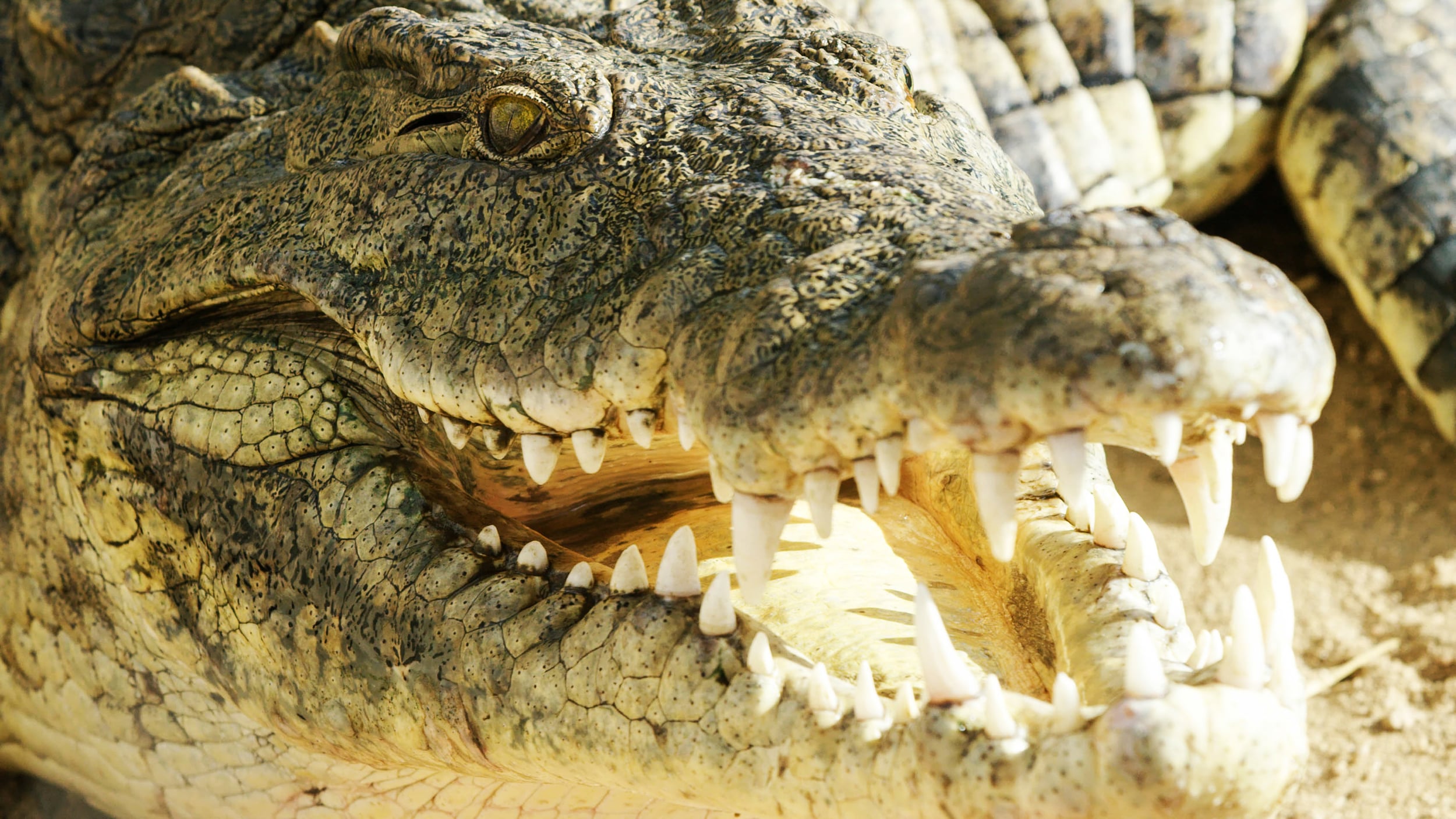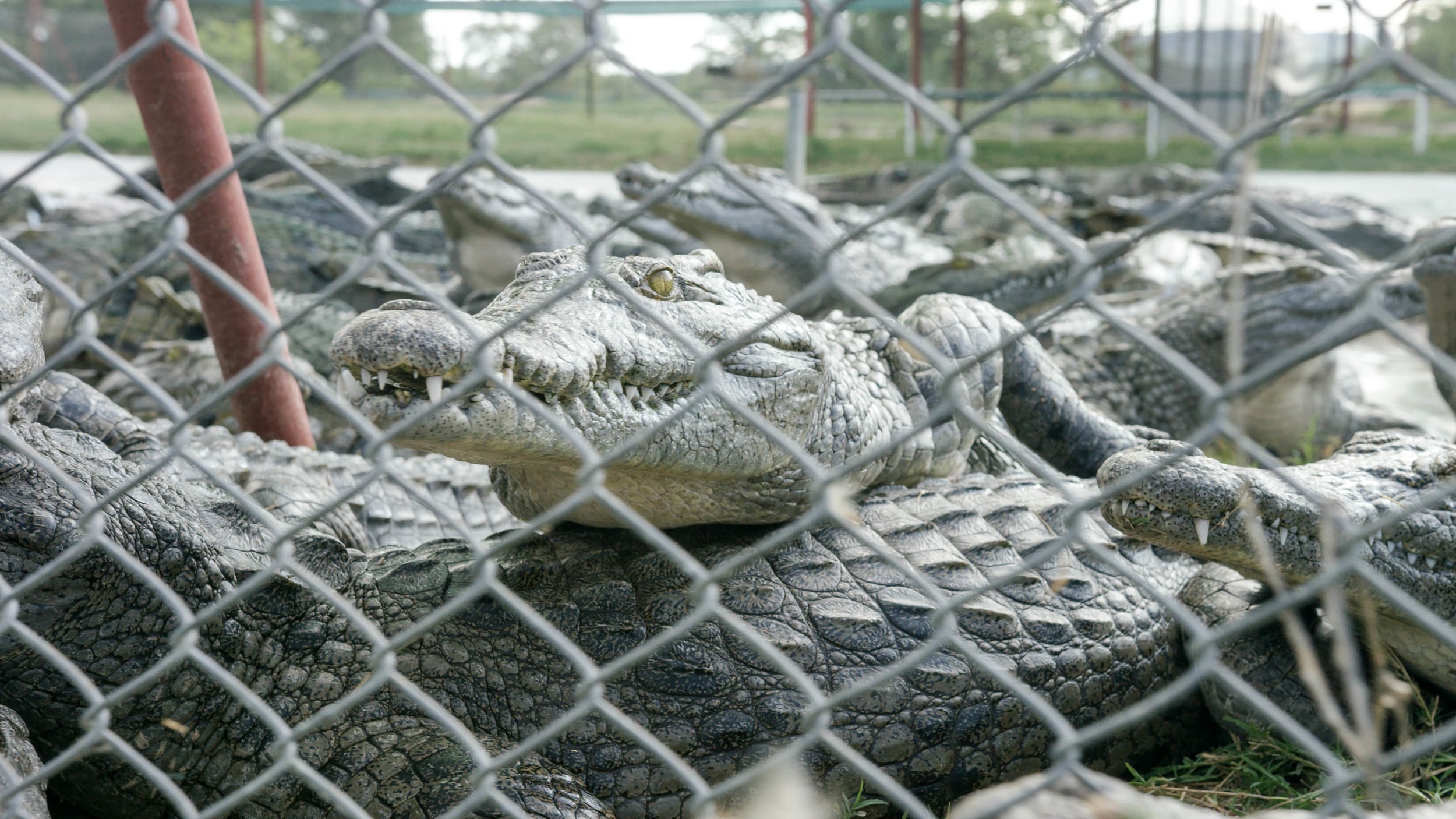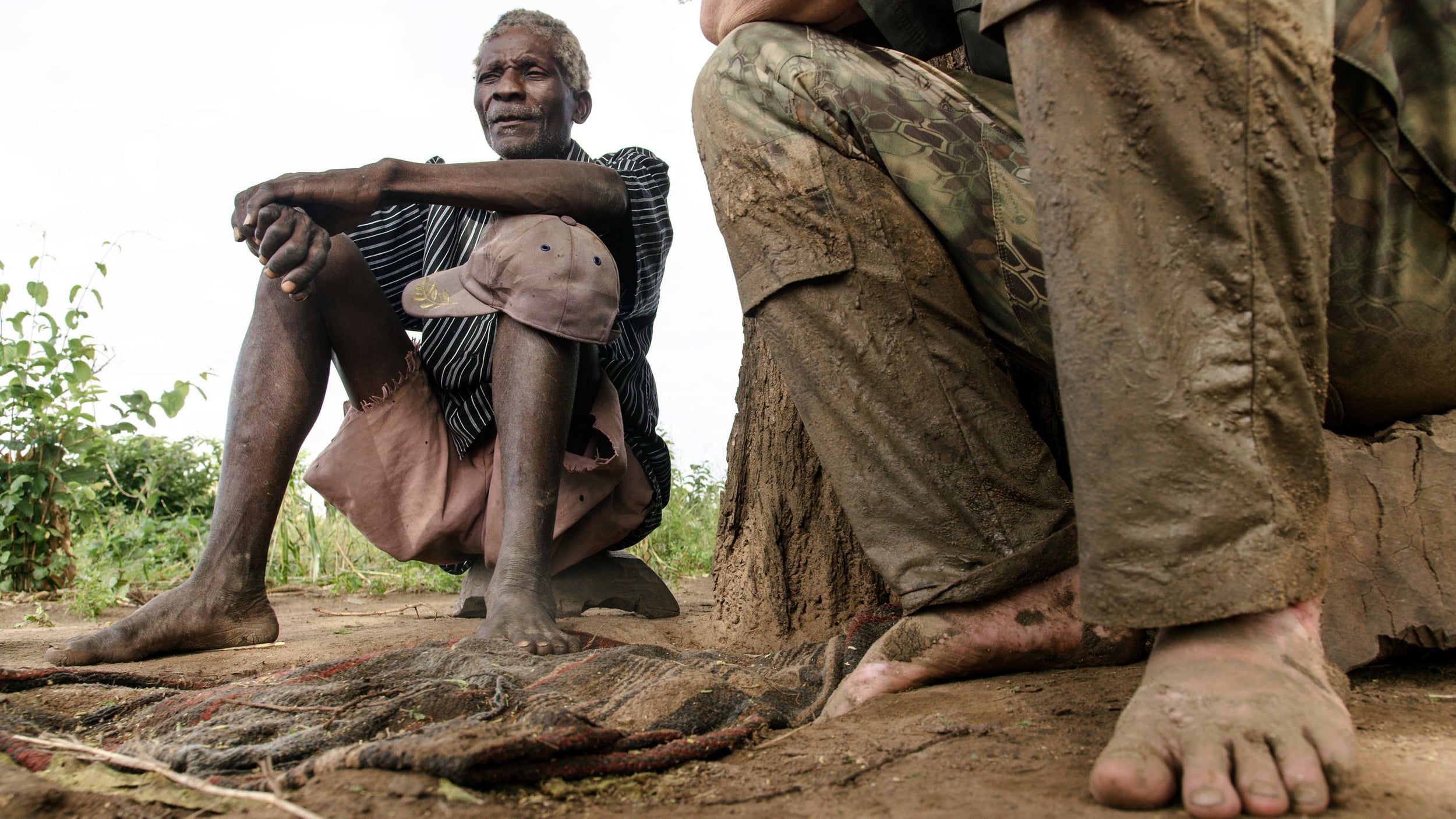In this episode we saw what’s possibly one of the least known conflicts in Africa, the conflict that arises from man eating crocodile events. Indeed, in some parts of the continent several hundred people are eaten by crocodiles every year.
THE EPISODE ITSELF
Ivan Carter begins his journey on a stretch of the Zambezi river, in the headwaters of the man-made lake Caborra Bassa, where the mighty Zambezi river empties its muddy waters into the lake. Ivan has heard of many disappearances, and within a few days he dicovers a real incident where a girl has been snatched from the riverbank as she was gathering water.
Ivan is called in to help investigate the attack, and amid the wailing of the distressed village he soon realizes that in this case, there is nothing he can do to help. What is this going on? why so much –
Through the episode Ivan Carter starts to examine the lifestyles of the people , where and how they live, and it soon becomes apparent that there are more people on this stretch of river than ever before. There are less fish and certainly less wildlife. We find ourselves at the CBS (Cahorra Bassa Safaris) crocodile farm where Ivan gets a lively introduction to the personality (or lack thereof) of these ancient beasts.
A fisherman’s funeral, one that involves burning his hut to the ground is the next scene where an old man tells Ivan – “If you don’t kill one of these crocs we are going to call in the military who will kill them all.”
This is a turning point - kill one to save many- but where to find these man eaters?
Ultimately a crocodile dies, Carter is not at all happy about this, it’s something that makes him feel that he has crossed a line – yet with very good reason, it needed to be done.
The ending is a sombre moment as we leave the village. We learn that the problem is not a crocodile one, it is instead, a human problem. and the dead croc we learn that this is not a crocodile prtoblem , this is a human problem. There is no easy solution here.
IS THIS STORY REAL?
Yes very much so! Several hundred people a year go missing on the stretch of river that is under Carter’s investigation. The issues are real, as becomes apparent through the show. There are more people than ever before, less fish and wildlife than ever before, and the crocs are simply doing what they are perfectly designed to do. Unfortuinately this is a story that plays out all too regularly throughout Africa, and for the first time in history the crocs are looking at a shaky future.
THE PLAYERS AND WHO THEY ARE (IN ORDER OF APPEARANCE)
Simon Rodger
Simon Rodger is the owner of the concession on whose waters we filmed. A very successful outfitter, Simon also puts thousands and thousands of his own dollars into his anti poaching programs. Truly, if it were not for him, this stretch of river and inland would be devoid of life. We do not see Simon through the episode but he is very worthy of mention.
simons anti poaching team is the only anti poaching in the area and is very effective -
Brandon Pentolfe
Brandon comes from a very long history in the crocodile industry, his father Neil being one of the world leaders in sustainable ethical crocodile farming, Brandon was catching, handling and managing crocodiles for as long as he can remember.
Brandon and his father Neil, as well as the third generation of pentolfes - these men represent 30 years of crocodile research.
The Villagers
These are truly the pivotal characters of this story, it’s these people who live mouthful to mouthful, who represent populations throughout Africa – these are the real story. As the human population in Africa literally explodes, the wildlife is getting squeezed. With 11 being the average number of children per family, and with most girls having their first child at 15, the population is expanding at an alarming rate. With no efforts to educate the people on family planning, indeed, this is not an issue that will go away soon.
WHERE WE FILMED THIS EPISODE
This episode was filmed in the headwaters of Caborra Bassa lake, through the very kind facilitation of Simon Rodger of Safaris de Mozambique. It’s people like Simon who truly make a difference, with a small but effective anti poaching team, he works diligently to protect and preserve his area.
While this is not directly linked to the crocodile itself, the croc is certainly a strong beneficiary of the wildlife protection that Simon works so hard to maintain. If you feel you would like to support this man and the people on the front line there please follow this link
CROCODILE FACTS OFF THE FRONT LINE
1) Gustave is a large male Nile crocodile from Burundi. He is a notorious man-eater, and is rumored to have killed as many as 300 humans from the banks of the Ruzizi River and the northern shores of Lake Tanganyika. https://en.m.wikipedia.org/wiki/Gustave_(crocodile
2) Crocodiles are one of the few animals that will use any opportunity to take human prey. http://www.planetdeadly.com/animals/deadliest-man-eating
3) Of all species, the undisputed heavyweight in terms of size is the saltwater crocodile of S.E. Asia and Australia. http://www.planetdeadly.com/animals/deadliest-man-eating
4) Defense of nests and eggs may be a contributing factor. In an investigation into crocodile attacks in Northern Zululand and southern Mozambique, 39 of the 43 documented cases in one year occurred between November and early April. This is when females are guarding their nests and males become aggressively territorial.http://forteanzoology.blogspot.com/2009/03/richard-freeman-man-eating-crocodiles.html
5) It is impossible to estimate the numbers of people who fall victim to crocodile attacks each year. Indeed, in some cases, there is simply no obvious trace left of the person, and their disappearance may remain a mystery forever. .http://creagrus.home.montereybay.com/monsters-crocs.html
6) 3000 people are seized, mutilated and, in most cases, eaten by crocodiles annually. The vast majority of victims are attacked by the [Saltwater/Estuarine/Indo-Pacific] Crocodile Crocodylus porosus, while the Nile Crocodile Crocodylus niloticus is almost as dangerous. http://creagrus.home.montereybay.com/monsters-crocs.html
7) There is little doubt that the Nile Crocodile is responsible for more attacks on humans than any other crocodilian species." http://creagrus.home.montereybay.com/monsters-crocs.html
8) If hungry, these prehistoric predators will target any mammal that comes within reasonably easy grasp. http://creagrus.home.montereybay.com/monsters-crocs.html
9) One would think that a human swimming in croc-infested waters expresses a death wish. Walking along the river’s edge can be exceedingly dangerous, and crocodiles can be incredibly fast. Reports of recent attacks on canoeists and kayakers are particularly chilling.http://creagrus.home.montereybay.com/monsters-crocs.html
10) A study by the on-line IUCN-SSC Crocodile Specialist Group estimated the number of attacks by Nile Crocodiles per year as 275 to 745, of which 63% are fatal, as opposed to an estimated 30 attacks per year by Saltwater Crocodiles, of which 50% are fatal. In both species, the mean size of crocodiles involved in nonfatal attacks was about 3 m (9.8 ft) as opposed to a reported range of 2.5–5 m (8.2–16 ft) or larger for crocodiles responsible for fatal attacks. Since the majority of fatal attacks are believed to be predatory in nature, the Nile Crocodile can be considered the most prolific wild animal predator of humans. http://creagrus.home.montereybay.com/monsters-crocs.html
11) The number of human casualties involved far exceeds those of by that great aquatic group of predators, the sharks. This is a direct reflection of the fact that human beings and crocodiles live in close proximity to each other.http://creagrus.home.montereybay.com/monsters-crocs.html
12) Many villagers rely on fishing for food and the river for water and washing, so potential encounters with people can occur daily. http://creagrus.home.montereybay.com/monsters-crocs.html
13) Crocodile attacks on humans are common in places where large crocodilians are native and human populations live. Only 6 of the 23 crocodilian species are considered dangerous to adult humans, and only individuals 2 metres (6.6 ft) in length or more represent a serious danger to humans, as smaller crocodiles are considered incapable of killing a human. https://en.m.wikipedia.org/wiki/Crocodile_attack#
14) An accurate count of annual crocodile attacks on humans is difficult to obtain. Many of the areas in which humans and large crocodiles come into contact are remote, impoverished, or in areas of political unrest. https://en.m.wikipedia.org/wiki/Crocodile_attack#
15) Crocodile attacks are not always reported to local authorities, and some reports are difficult to verify. Nevertheless, some information does exist. https://en.m.wikipedia.org/wiki/Crocodile_attack#
16) Crocodiles do not necessarily set out to hunt humans. They are clearly ferocious hunters, but they are opportunistic predators. http://www.bbc.com/earth/story/20150721-when-crocodiles-attack
17) This "human crocodile conflict" (HCC) is increasing annually as crocodile populations recover from decades of overhunting, and human populations continue to grow and encroach upon crocodile habitat. http://www.crocodile-attack.info/
18) This competition for resources between crocodiles and humans is of serious conservation concern.http://www.crocodile-attack.info/
19) While many people find the great Nile crocodile as part of their main food, many African tribes would not hesitate to kill or attack a Nile crocodile when one of the members of the family or village falls prey to anattack. http://beautifulafricanwildanimalspets.blogspot.com/p/crocodiles-of-african-nile.html
20) Of all large predators, crocodiles account for the most human deaths. Over 500 people per year in Africa are taken by crocodiles. This is more than all the big cats, bears and sharks combined. http://forteanzoology.blogspot.com/2009/03/richard-freeman-man-eating-crocodiles.html
21) In reality only two crocodilians can truly be counted as man-eaters: the Nile crocodile, and the Indo-Pacific crocodile. http://forteanzoology.blogspot.com/2009/03/richard-freeman-man-eating-crocodiles.html
22) In November 2003 three people were eaten by a crocodile in a single attack. A big crocodile attacked their dugout canoe in Malawi's biggest and longest river. Five people were in the canoe when the reptile dragged it under in deep waters in the Shire River, only two made it to shore. http://forteanzoology.blogspot.com/2009/03/richard-freeman-man-eating-crocodiles.html
